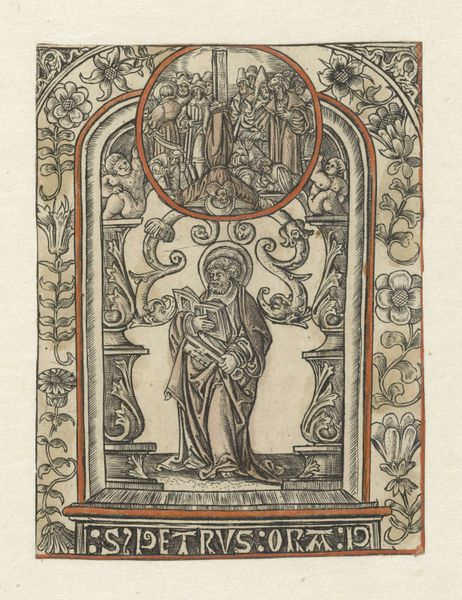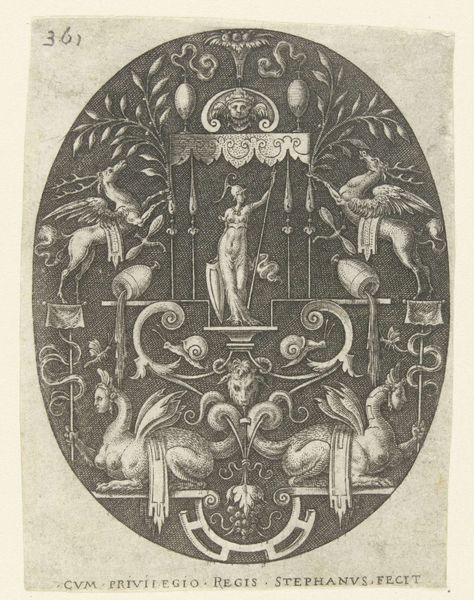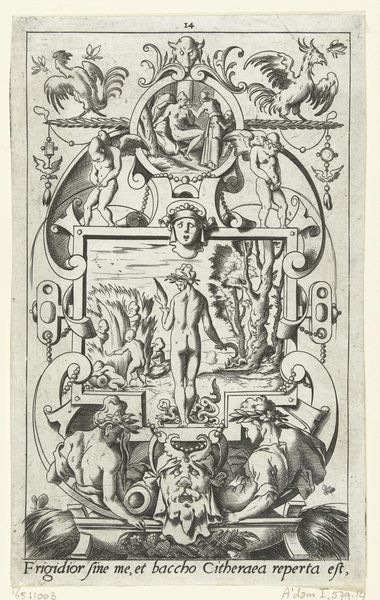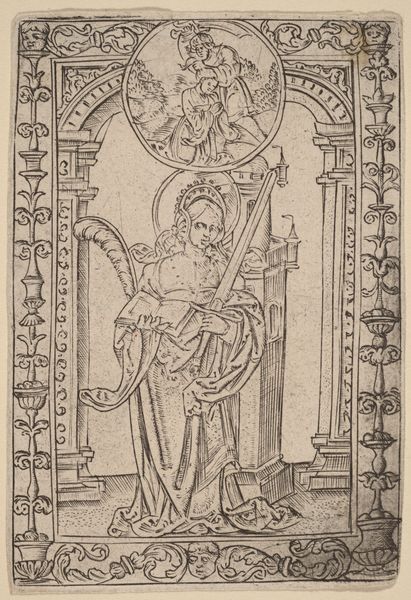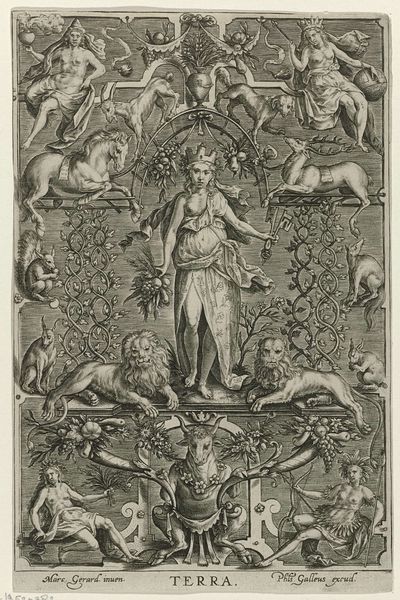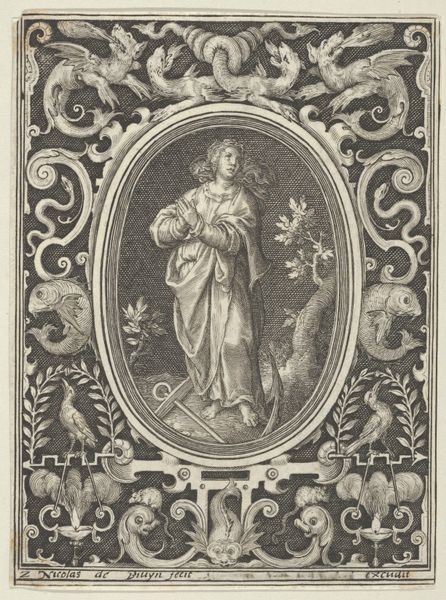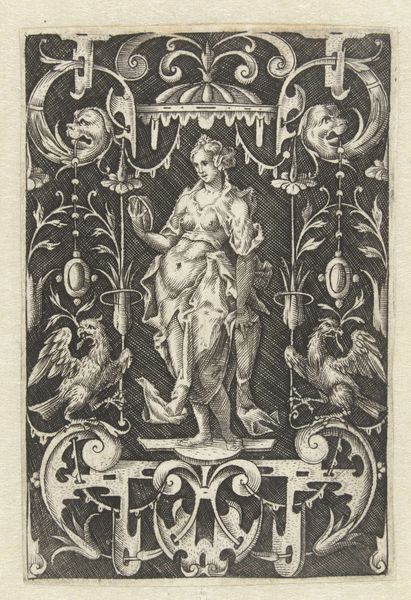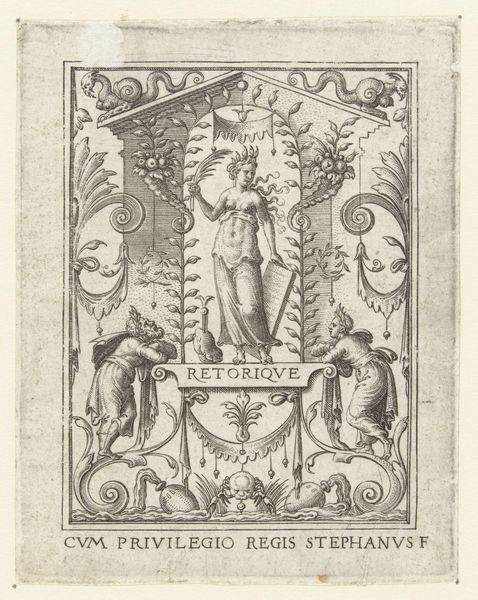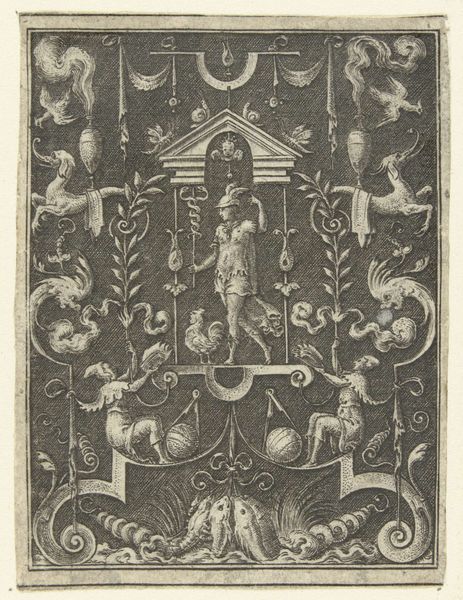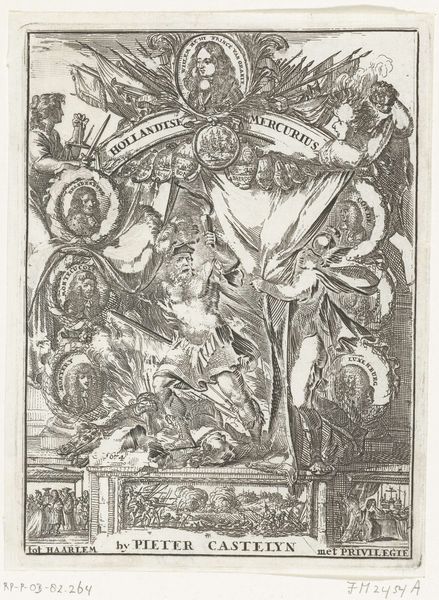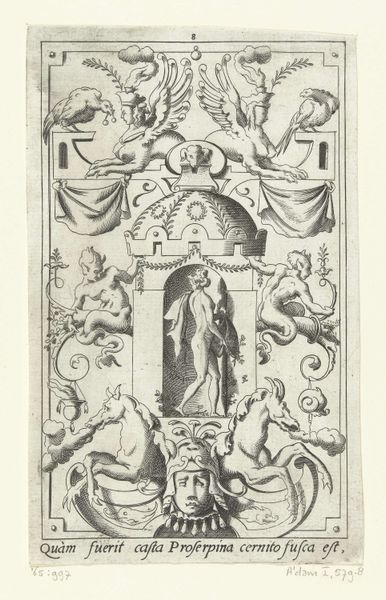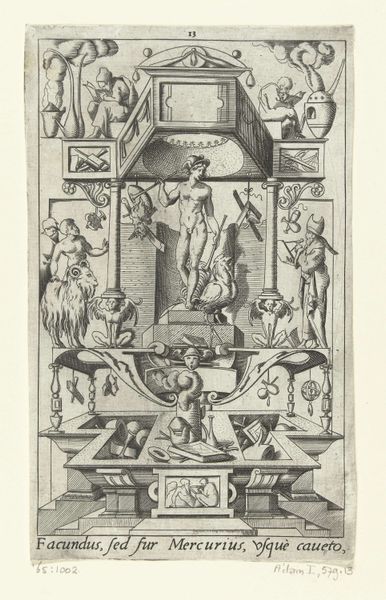
drawing, print, ink, engraving
#
portrait
#
drawing
#
pen drawing
# print
#
figuration
#
ink line art
#
11_renaissance
#
ink
#
history-painting
#
northern-renaissance
#
engraving
Dimensions: height 206 mm, width 139 mm
Copyright: Rijks Museum: Open Domain
Editor: This is “Heilige Laurentius,” or Saint Lawrence, a print from around 1550 by Monogrammist CI. It looks like an engraving. What strikes me is how Saint Lawrence is centrally placed, but framed by scenes of what I think might be his martyrdom. How should we understand this image within the historical context of the 16th century? Curator: Precisely. Looking at this piece as an historian, I see it reflecting the anxieties and devotional practices of the time. The central figure of Saint Lawrence, surrounded by scenes of his life and, most gruesomely, his martyrdom, served as a potent symbol for viewers. These kinds of prints often circulated widely, beyond just elite circles. Editor: So, it's less about pure aesthetics and more about religious and social messaging? Curator: Indeed. The graphic quality suggests broader distribution. These weren’t artworks destined only for wealthy patrons. The choice to depict Lawrence's martyrdom repeatedly speaks to a culture grappling with themes of suffering, faith, and redemption. It almost suggests a narrative comic book format which allowed those who were illiterate to understand stories from the bible. The print media format was powerful. What do you notice about the figures surrounding Lawrence? Editor: They seem to be worshipping or perhaps in mourning. Curator: That's important. Consider how these smaller figures relate to the primary image of Lawrence. How do they contribute to the overall meaning of the artwork as a piece of socio-religious communication? The scenes depict stories that support the legitimacy of Lawrence and inspire others. Editor: I hadn’t considered it that way, as active social messaging. That reframes the image for me. It's less of a static portrait and more of an agent acting upon the viewer, right? Curator: Exactly. And in doing so, it reflects back at us what that society valued and feared. This wasn’t just about artistry, it was about influence.
Comments
No comments
Be the first to comment and join the conversation on the ultimate creative platform.
